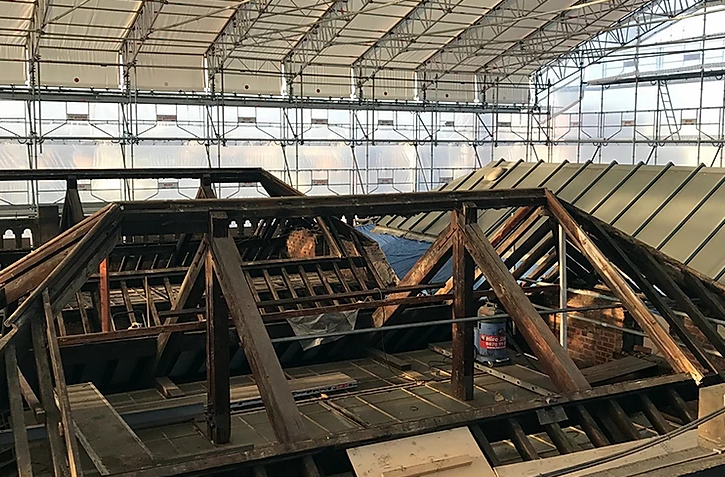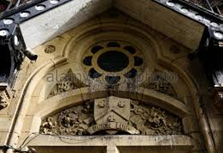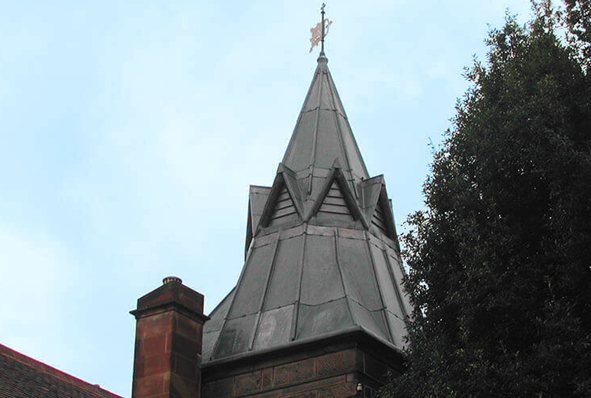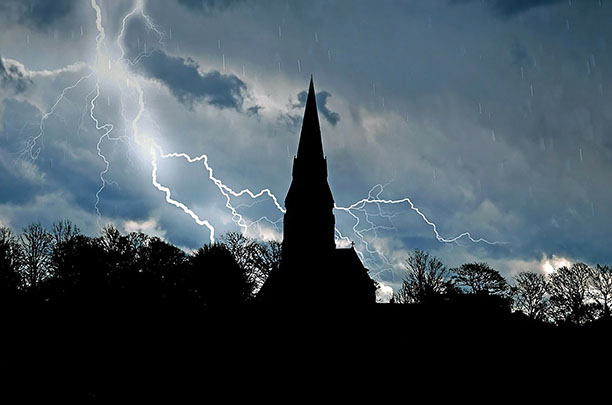Heritage Roofing
Heritage roofing - maintaining our iconic buildings
The UK is home to some of the most iconic buildings in the world, from stunning churches and cathedrals to historic stately homes. Each and every one of these remarkable feats of architecture requires regular maintenance to ensure they remain in the very best condition, allowing them to be enjoyed for generations.
Cathedral Care
Restoration and upkeep of cathedrals
There are some 42 Anglican cathedrals in the UK, not to mention 20 or so Catholic cathedrals. Cathedrals form the most important collection of historic buildings in England. The largest and most ancient are internationally famous, the smallest are usually among the most significant buildings in their region and even the most recent are architectural masterpieces.
Master Craftsmen
Championing our heritage with modern craftsmanship
Twenty years ago, English Heritage (now Historic England) published its first-ever Register of Buildings at Risk across England, which featured nearly 2,000 buildings and monuments that were ‘neglected, broken and unloved’. Recently Historic England was delighted to announce that over two-thirds of those buildings were now safe, in both urban and rural areas right across the country.
Traditional Lime
Lime: it’s better for buildings – and for the environment
It is now fairly well known that cement is not good for old buildings and that lime mortar should be used. But why? What are the advantages and what are the disadvantages? In order to begin to answer those questions it is necessary to understand the nature of traditional building, the process by which buildings used to be built, and how it differs from modern construction, the process by which we build today.
Audio Visual
Audio visual equipment in church buildings
This guidance is issued by the Church Buildings Council under section 55(1)(d) of the Dioceses, Mission and Pastoral Measure 2007. As it is statutory guidance, it must be considered with great care. The standards of good practice set out in the guidance should not be departed from unless the departure is justified by reasons that are spelled out clearly, logically and convincingly.
Read More...
CRE Events
After the Midlands, onward to Milton Keynes
"CRE Midlands reminded me of the giddy days when it first began – the venue was packed with exhibitors and visitors and there was a busy atmosphere. The whole thing looked great."
Insurance
You need to ensure that reasonable precautions are in place at your church to keep it safe for those who use it. To do this, you need to think about what might cause harm to people.
You will then need to decide if the precautions already in place are adequate. If they are not, you may need to identify further action to prevent any danger. When done formally, this is known as a risk assessment.
Church Maintenance
Church maintenance and repair: Calendar of Care
Just as prevention is always better than cure, maintenance is preferable to major repairs. But, such repairs may not always be avoidable. Church Care offers a monthly guide in our coming issues Starting in Spring
We can help you understand the common problems and areas that need your special attention, and give you tips for regular maintenance schemes.
Pest Control
Michael Palin warns of pest threat to churches
Michael Palin is supporting the future of the UK’s historic churches and chapels with a voiceover for a new animated film. The 80 second animation, produced for the National Churches Trust, highlights why churches are some of the nation’s best loved buildings.
Town Halls
The history of the great Victorian Town Halls of Northern England
From industrial squalor to civic pride, the story behind some of the most impressive buildings of the North involve a unique mix of economics, grand designs and noble sentiments within communities.
Lead Roofing
Lead is one of the oldest materials in the roofing industry and is still commonly used throughout the world today.
Lead roofing is a traditional roofing method which has been used in the industry for hundreds of years, and is therefore proven to be extremely reliable. Lead roofing, and sand-cast lead, in particular is ideal for old buildings such as churches or historical renovations, whereas milled lead roofing is a mass-produced alternative, used for precision and accuracy in homes and commercial buildings alike.
Lightning Protection
When lightning strikes are you protected against this act of God?
The issue of lightning protection in churches is one that has exercised this publication for many years. In this four-part series of spotlights on the issue we will be revisiting various aspects of the subject, beginning with an overview of current thinking.
SEARCH OUR DIRECTORY
Parishioners warm to an environmentally-friendly ‘first’ for a City church
With its roots in medieval England, the Parish Church of St Giles, Cripplegate, has stood the test of time. Now nestling in the heart of the Barbican Centre on the edge of the City of London, it serves both its local congregation and a wider community, with its renowned organ school and recording facilities frequently used by the BBC.
The building was damaged during the blitz, and part of its post-war restoration was to install a new heating system. The underfloor system served the church for over 50 years; however, in recent years it became clear it was failing with, ever more leaks in the floor.The Parochial Church Council decided that a completely new system needed to be installed and instructed Peter Graham and Associates to draft proposals.
The new system utilises a 145kW biomass boiler from Broag-Remeha, fuelled by wood pellets. Environmentally sound and economically viable, biomass pellets have an estimated carbon footprint saving of 75% over that of natural gas.
The new scheme employs banked radiators in trenches that are set around the perimeter of the nave and in the tower floor. Developed and refined by Peter Graham, the design provides for minimal intrusion into the area of the nave while strictly limiting the buoyancy of the warmed air rising from them, ensuring that the warmed air remains at low level where it is wanted, rather than heating just the roof.
The vestry and another small area are separately controlled, both for timing and with their own compensators. The nave also has a night setback facility for use in cold weather to prevent it becoming too cold at night.
There is a gas boiler option to serve when just the small areas are called, although the biomass boiler serves the complete installation when the nave is in use.
The fully-automatic biomass boiler has been installed in an existing crypt beneath the nave, in a completely closed space, together with the pellet fuel store. Fuel is delivered by road tanker and pumped by air suspension into the bunker.
The air for combustion, plant room ventilation and exhaust gas dilution is mechanically supplied by a variable-speed fan set drawing air from the roof. The exhaust products are diluted to reduce their temperature to 60C to control buoyancy and then, again with speed variation, fan assisted to their exit point, also on the roof.
The church is a listed building and although the installation presented many mechanical and administrative problems during execution, including accidentally cutting a radiator trench into an unknown ancient crypt, they were all ably overcome by the contractor Arnica Mechanical Services Ltd, who completed the heating works in their entirety. That included all the electrical control panels and wiring and lifting the 2½-tonne boiler into the crypt.
Arnica has been involved in many medium to large remedial and replacement boiler rooms and heating systems throughout London and the Southern Counties. The company was able to provide a complete service to the church, from initial reviews to final commissioning.
Arnica also provides on-going service and maintenance for both their own installations and those of others, including 24-hour cover. The contractors commented on the high standard, quality and appearance of the Broag-Remeha biomass boiler, its low carbon footprint and its remarkably good control system.
The outcome has been very satisfactory, being the first biomass boiler to be installed in a City of London church. Peter Graham and Associates have extensive experience of heating installations within ecclesiastical and listed buildings, especially in overcoming peculiar and difficult installation problems, and in working with both the authorities and specialist contractors to achieve targets that some may have thought impossible.






































